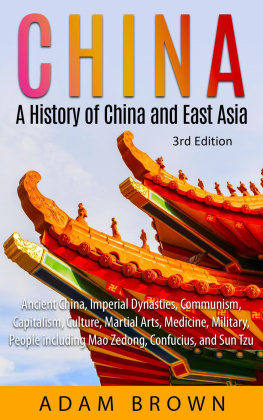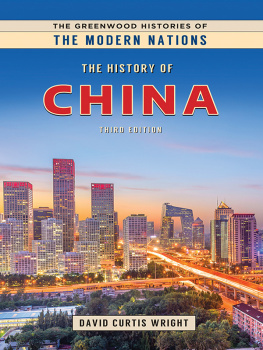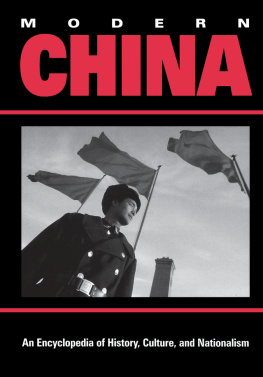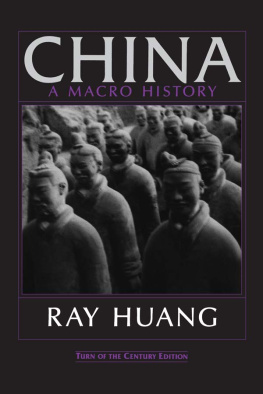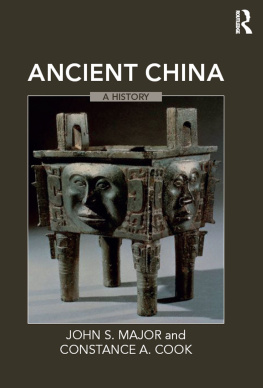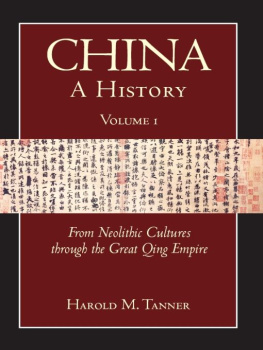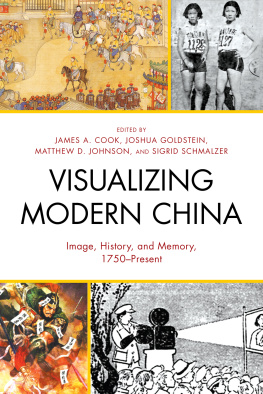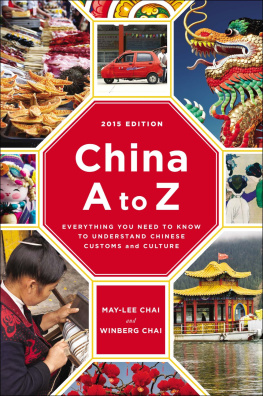CHINA ITS HISTORY AND CULTURE
Also by W. Scott Morton
Japan: Its History and Culture
The Japanese: How They Live and Work
Also by Charlton M. Lewis
Prologue to the Chinese Revolution: The Transformation of Ideas and Institutions in Hunan Province
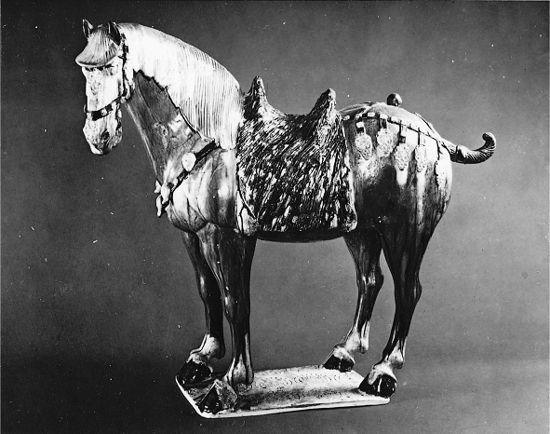
Bactrian horse. Tang dynasty, eighth century.
This superb horse of dignity and power represents an import to China from Ferghana in Central Asia, quite distinct from the Mongolian pony. Even the sculptors of the Parthenon frieze did not exceed the skill of the Tang artist who made this figure, an unusually large one over 26 inches tall, covered in the typical three colors of glaze: cream, chestnut brown, and green. The imperial stables and pastures numbered their steeds in hundreds of thousands about this time, and poets and artists celebrated them with names such as Flying Dragons and Horses of Heaven. Some were trained to give exhibitions of dancing at the palace.
Collection of Mr. and Mrs. Ezekiel Schloss
Photo: Keith Scott Morton
CHINA ITS HISTORY AND CULTURE
FOURTH EDITION
W. SCOTT MORTON
CHARLTON M. LEWIS


Copyright 2005, 1995, 1982, 1980, 2004 by W. Scott Morton. All rights reserved. Except as permitted under the United States Copyright Act of 1976, no part of this publication may be reproduced or distributed in any form or by any means, or stored in a database or retrieval system, without the prior written permission of the publisher.
ISBN: 978-0-07-146526-7
MHID: 0-07-146526-X
The material in this eBook also appears in the print version of this title: ISBN: 978-0-07-141279-7, MHID: 0-07-141279-4.
All trademarks are trademarks of their respective owners. Rather than put a trademark symbol after every occurrence of a trademarked name, we use names in an editorial fashion only, and to the benefit of the trademark owner, with no intention of infringement of the trademark. Where such designations appear in this book, they have been printed with initial caps.
McGraw-Hill eBooks are available at special quantity discounts to use as premiums and sales promotions, or for use in corporate training programs. To contact a representative please e-mail us at bulksales@mcgraw-hill.com.
Grateful acknowledgment is made for permission to reprint:
Excerpts from The Analects of Confucius, translated by Arthur Waley. Copyright 1938 by George Allen & Unwin Ltd. Reprinted by permission of George Allen & Unwin (Publishers) Ltd. and the Macmillan Publishing Co., Inc.
Excerpts from Book of Songs (Shih Ching), translated by Arthur Waley, 1960. Reprinted by permission of George Allen & Unwin (Publishers) Ltd. and Grove Press, Inc.
Excerpts from Life and Times of Po Chu-i by Arthur Waley. Reprinted by permission of George Allen & Unwin (Publishers) Ltd.
Excerpts from The Way and Its Power by Lao-tzu, translated by Arthur Waley, 1958. Reprinted by permission of George Allen & Unwin (Publishers) Ltd. and Grove Press, Inc.
Maps by Paul J. Pugliese
TERMS OF USE
This is a copyrighted work and The McGraw-Hill Companies, Inc. (McGraw-Hill) and its licensors reserve all rights in and to the work. Use of this work is subject to these terms. Except as permitted under the Copyright Act of 1976 and the right to store and retrieve one copy of the work, you may not decompile, disassemble, reverse engineer, reproduce, modify, create derivative works based upon, transmit, distribute, disseminate, sell, publish or sublicense the work or any part of it without McGraw-Hills prior consent. You may use the work for your own noncommercial and personal use; any other use of the work is strictly prohibited. Your right to use the work may be terminated if you fail to comply with these terms.
THE WORK IS PROVIDED AS IS. McGRAW-HILL AND ITS LICENSORS MAKE NO GUARANTEES OR WARRANTIES AS TO THE ACCURACY, ADEQUACY OR COMPLETENESS OF OR RESULTS TO BE OBTAINED FROM USING THE WORK, INCLUDING ANY INFORMATION THAT CAN BE ACCESSED THROUGH THE WORK VIA HYPERLINK OR OTHERWISE, AND EXPRESSLY DISCLAIM ANY WARRANTY, EXPRESS OR IMPLIED, INCLUDING BUT NOT LIMITED TO IMPLIED WARRANTIES OF MERCHANTABILITY OR FITNESS FOR A PARTICULAR PURPOSE. McGraw-Hill and its licensors do not warrant or guarantee that the functions contained in the work will meet your requirements or that its operation will be uninterrupted or error free. Neither McGraw-Hill nor its licensors shall be liable to you or anyone else for any inaccuracy, error or omission, regardless of cause, in the work or for any damages resulting therefrom. McGraw-Hill has no responsibility for the content of any information accessed through the work. Under no circumstances shall McGraw-Hill and/or its licensors be liable for any indirect, incidental, special, punitive, consequential or similar damages that result from the use of or inability to use the work, even if any of them has been advised of the possibility of such damages. This limitation of liability shall apply to any claim or cause whatsoever whether such claim or cause arises in contract, tort or otherwise.
BEIJING OPERA
The style of musical drama known as Beijing opera (jingju), represented on the cover of this book, developed in eighteenth century China from earlier traditions of regional drama. Many regional drama traditions still survive, but Beijing opera has developed on a national level to great heights of artistic achievement. Performers are trained from childhood and specialize in one of the fixed types of role, which are somewhat similar to those of commedia dellarte (e.g., mature scholar, refined young lady, warrior, buffoon). The great actors of the late nineteenth and early twentieth century were tremendous celebrities in their day. Performers have to master the four skills of singing, gesture, speech, and martial arts, though the requirements for these vary with the roles. Plots are generally based on Chinese history and legend. In traditional China, opera performances were often given as part of a religious festival, and a complete story cycle could be performed over several days. In the present day, an opera performance in a theater normally consists of either a single story or a selection of key scenes from different operas, sometimes highlighting the work of a particular performer. It is customary to use no scenery other than a couple of chairs and a table, which can represent anything from an inn to a palace to a fortified city to a mountain range. However, costumes are very elaborate and splendid, and makeup is also very stylized; certain roles, especially warriors, wear dramatic face paint whose designs symbolize their personalities, while buffoons and villains wear white face paint. The dialogue spoken by roles of high social status is enunciated in a highly stylized manner, but female characters and those of low social status speak a more natural form of Beijing dialect. The language of the sung arias can be highly poetic, and surtitles are now usually used to enable the audience to follow the words. One rhyme sound is used throughout a scene, and the arias are sung to a fixed repertoire of tunes, played by a small string, woodwind, and percussion orchestra which would traditionally sit to one side of the stage.
Next page


